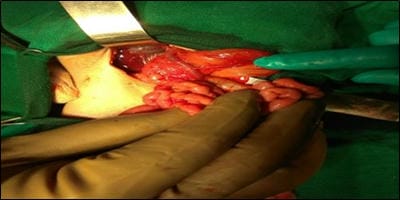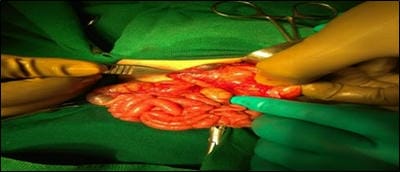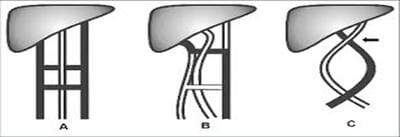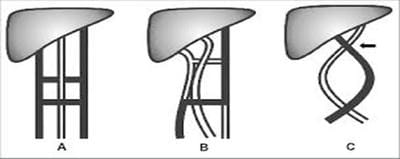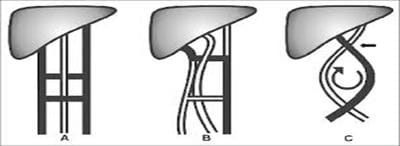Preduodenal portal vein – a cause of antenatally diagnosed duodenal obstruction
Gattu H.1*, Dhanani V.2, Susarla B.3, Sagar Ambati K.4
DOI: https://doi.org/10.17511/ijpr.2020.i07.11
1* Harshitha Gattu, Neonatology Fellow, Department of Neonatology, Ankura Children’s Hospital, Telangana, India.
2 Vishakha Dhanani, Post-Graduate, Department of Neonatology, Ankura Children’s Hospital, Telangana, India.
3 Balaji Susarla, Senior Consultant, Department of Neonatology, Ankura Children’s Hospital, Telangana, India.
4 Karuna Sagar Ambati, Senior Consultant, Department of Pediatric Surgery, Ankura Children’s Hospital, Telangana, India.
Preduodenal portal vein (PDPV) is a rare congenital vascular anomaly in which the portal vein passes anterior to the duodenum rather than posteriorly. Generally asymptomatic, PDPV may rarely cause a duodenal obstruction in the newborn. It is usually associated with gastrointestinal tract, cardiac, pancreatic, as well as biliary tract anomalies or may, occur as a single isolated malformation. Till now, only a few cases have been reported with duodenal obstruction and associated anomalies. The present study report one such case of PDPV with multiple congenital anomalies. A full-term, one-day-old baby who had an antenatal history of polyhydramnios, presented to us with abdominal distension and non-bilious vomitings soon after birth. Surgical exploration revealed a hugely dilated stomach, multiple Ladd bands, malrotation of the small intestine, preduodenal portal vein, and an annular pancreas causing external duodenal compression. Intraoperative recognition of PDPV is important because iatrogenic injury during surgery can cause profuse hemorrhage from the vein and may cause damage to the biliary tract or duodenal wall. Prompt evaluation of associated cardiac anomalies is important before surgery. Duodenostomy anterior to the portal vein is the definitive treatment. Studies in animal models (AKR/J mice) have shown an autosomal recessive mode of inheritance.
Keywords: Preduodenal portal vein, Congenital vascular anomaly, Duodenostomy anterior
| Corresponding Author | How to Cite this Article | To Browse |
|---|---|---|
| , Neonatology Fellow, Department of Neonatology, Ankura Children’s Hospital, Telangana, India. Email: |
Gattu H, Dhanani V, Susarla B, Ambati KS. Preduodenal portal vein – a cause of antenatally diagnosed duodenal obstruction. Pediatric Rev Int J Pediatr Res. 2020;7(7):388-391. Available From https://pediatrics.medresearch.in/index.php/ijpr/article/view/630 |


 ©
© 